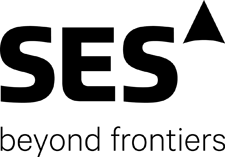
In early February of this year, Intelsat S.A. (NYSE: I) and SES S.A. composed a proposal to the U.S. Federal Communications Commission (FCC) which sought to protect the wide array of established satellite services in the 3700 to 4200 MHz C-band downlink spectrum, while opening a specified portion of that spectrum for terrestrial mobile use.
The FCC, in a draft proposal issued on June 21, could bring C-band spectrum to the wireless industry via a four step plan that will allow a portion of this RF spectrum to be used by 5G wireless nets. The proposal seems to follow the majority of an Intelsat and SES proposal developed earlier this year that recommended the establishment of a commercial and technical framework that would permit wireless operators to quickly access approximately 100 MHz of nationwide C-band downlink spectrum in the United States, which would enable the seeding of 5G services.


The stated purpose of the Intelsat and SES proposal was to protect the quality and reliability of the extensive services offered by satellite operators in C-band to U.S. broadcasters, media and data companies, and to make certain the seamless distribution of video and audio programming would continue to 100+ million U.S. households. Additionally, the provisioning of critical data connectivity in rural areas and for emergency situations as well as U.S. Government connectivity would also be "protected".
The proposal called for the institution of a Transition Facilitator consortium to be formed by industry members to enter into negotiations with mobile operators for approval of spectrum transference. Consortium membership would be open to all satellite operators that are delivering C-band downlink frequencies to any portion of the lower 48 United States and would oversee the governance of the initiative as well as define and implement spectrum clearance methodology.
In statements last February concerning what-was-then the FCC's tentative plan:
- Karim Michel Sabbagh, President and CEO of SES, said that the C-band is and remains a critical component of the U.S. network architecture. Space and ground segment operators have invested billions of dollars in U.S. C-band networks and connectivity and generate important value out of it. It is therefore our duty and mission to protect the C-band in the U.S. from any form of disruption and preserve its use. The C-band satellite consortium is to be set up to ensure that the expansion of the C-band ecosystem in the U.S. will protect the interests of hundreds of established services and millions of American end-users, while at the same time paving the way for the creation of next-generation 5G terrestrial services.
- Intelsat CEO Stephen Spengler said that the company's priority continues to be creating a framework that provides certainty and protects the quality and reliability of the services the company provides to their media, network services and government customers. This proposed market-based solution provides a speedy resolution to the U.S. objective of accelerating deployment of 5G services. With Intelsat and SES now in agreement on major tenets of the framework, and with the support of Intel, the companies are confident in the ability to implement this proposal quickly and efficiently, ultimately to the benefit of American consumers and the U.S. economy.
There are four steps outlined in the just-released FCC draft proposal for C-band reallocation. The first step is the aforementioned Transition Facilitator and whether or not to implement this endeavor — this possibility is now open to industry and interest group discussions. The second step would be to handle the companies who wish to gain C-band spectrum in a negotiation process with the Transition Facilitator (should such an entity be approved by the FCC). The third step, following an approved transition plan, would be to start the process of accepting C-band terrestrial license applications. The fourth step would be the actual granting of licenses.
The FCC vote will occur on July 12 and the agency will decide at that time whether or not to open comment on the use of 500 MHz of the C-band. The federal agency is also requiring fixed-satellite service (FSS) Earth stations and space stations to “provide a clearer understanding of their operations.” The FCC will also ask for comment regarding potential aspects of C-band use, from a mobile allocation to “flexible use in the band, including whether to transition all or part of the band through a market-based mechanism, auction mechanisms, or alternative mechanisms” and “potentially allowing point-to-multipoint use on a shared basis.”
Claude Aiken, President of the Wireless Internet Service Providers Association (WISPA), stated that unlocking this spectrum for fixed wireless use would expand broadband access and competition for millions of rural Americans who lack choices today. If this action is correctly completed, there could be more gigabit fixed wireless in rural America — sharing with satellite receivers and others is possible through frequency coordination and WISPA looks forward to supplementing the record.
Intelsat and SES commented positively on the June 25 FCC draft plan, with the former stating this was "...the most expedient solution," and the latter with "we are pleased with the positioning of our proposal..."
The entire, informative FCC Fact Sheet published on June 21, entitled "Expanding Flexible Use of the 3.7 to 4.2 GHz Band," is available for PDF download at this direct link...

Do you want to learn more about what is going on in the industry as well as to network with leaders that can help guide you and your business concerns toward optional use of new technologies and trends? Be certain not to miss Satellite Innovation 2018, occurring in October in Silicon Valley! (SatInnovation.com)

